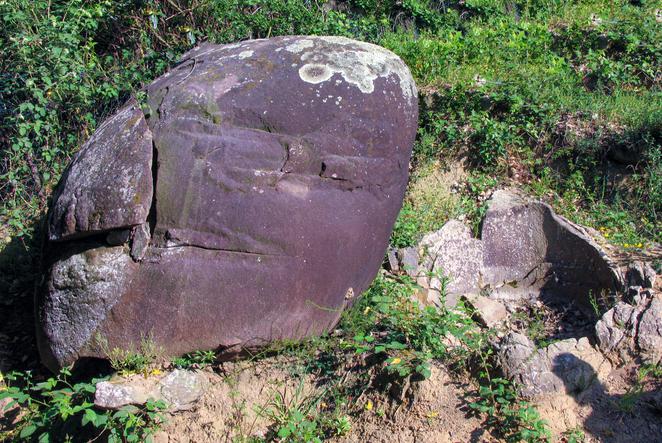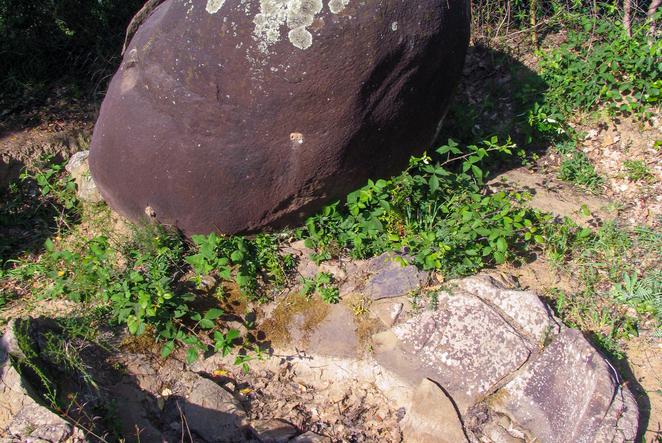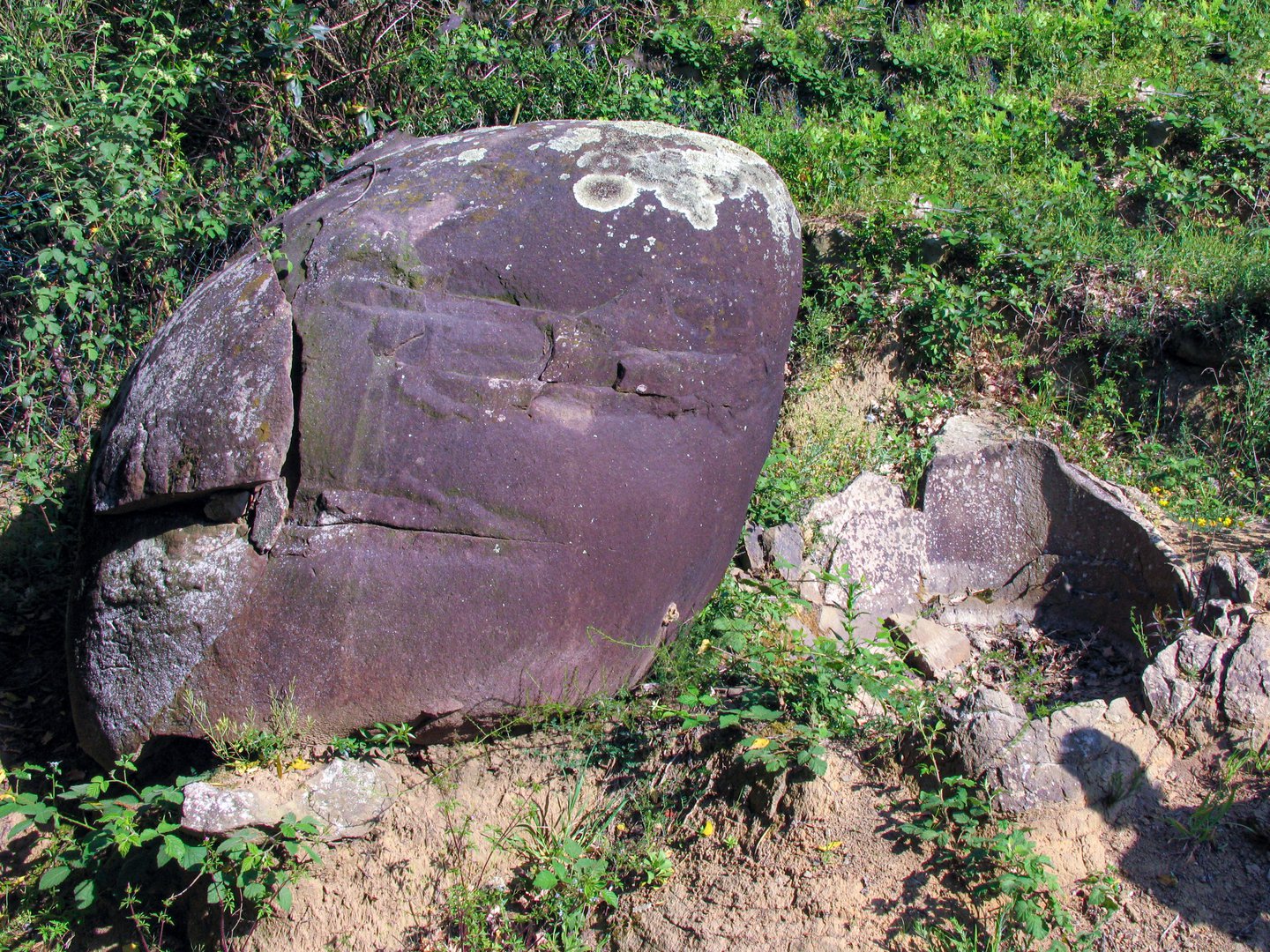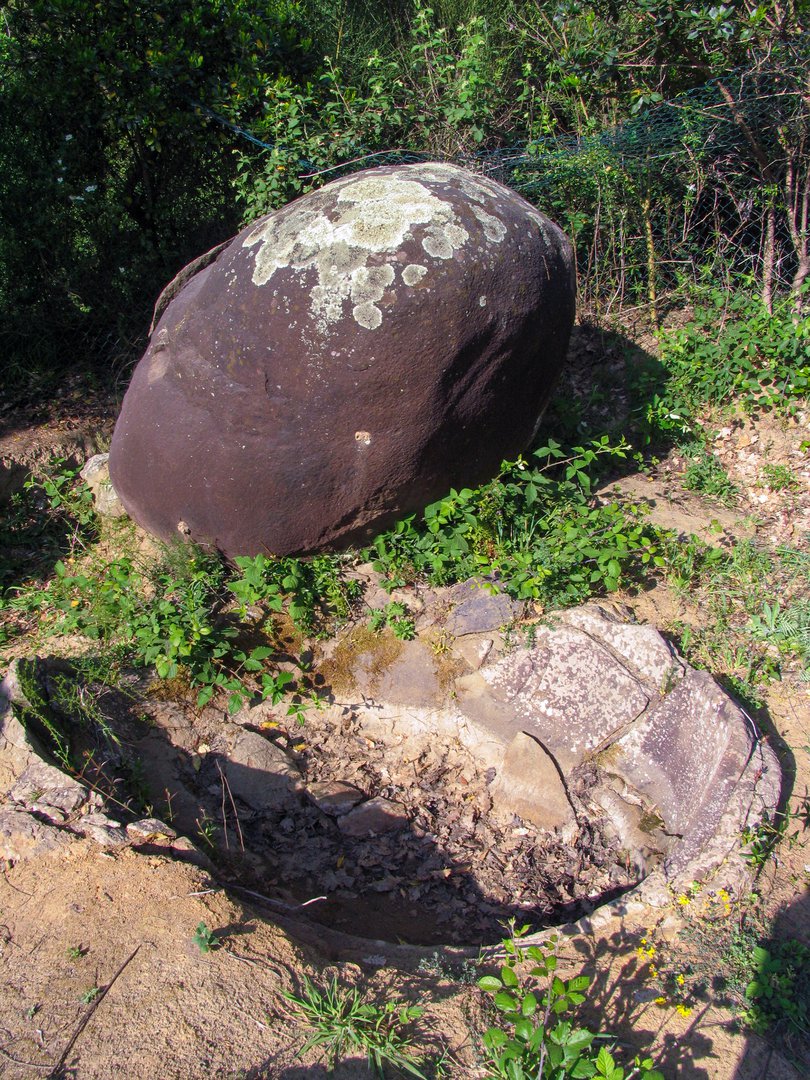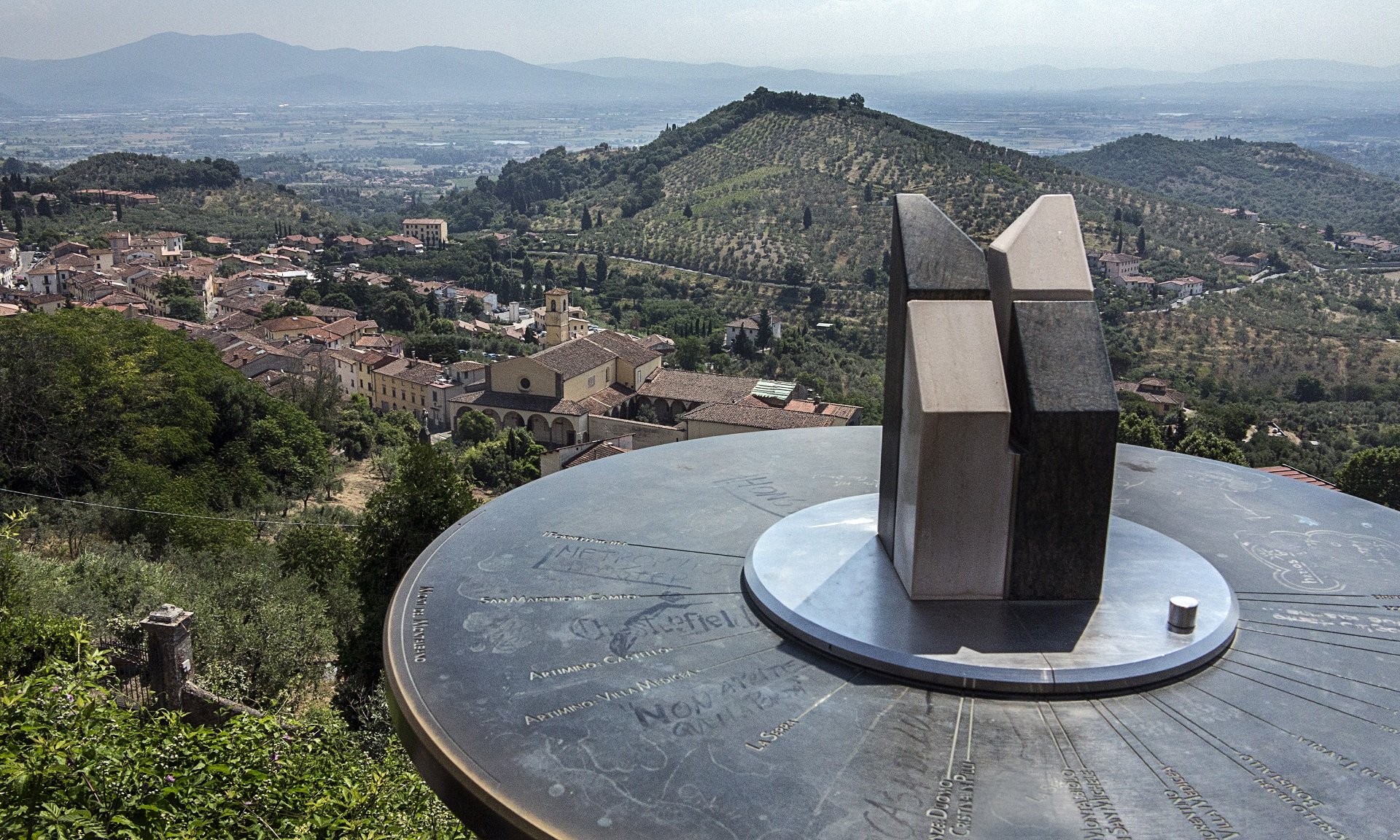Egg Tomb
The site was discovered in 2002 by the Archaeological Group of Montelupo on the recommendation of Luciano Bellucci. It is a pitch, built by filling the sloping area of a rocky ridge until it was flat: a low wall, of which two courses of stones remain today, outlining a circle of about 25 meters in diameter. The archaeological investigation has shown that these are not the remains of the drum of a monumental tumulus, but a place used to exhibit the dead before burial: a practice that finds a very significant example in the Etruscan necropolis of Sarteano.
The cult and funerary destination of the place is suggested by the large egg-shaped monolith (a symbolic element that often accompanies the Etruscan tombs), connected to an access path with a staircase (now lost), which was reserved for priests. On the southern side, at the base of the upper ridge - where the relatives of the deceased who attended the ceremony were probably located - traces of a small road were found which, through a small bridge that crossed the stream, was used for the passage of the cart on which the body was deposited, and housed the officiants who accompanied the priest.
The typology of the rite suggests that it is an Etruscan place of worship referable to the 5th century B.C.
Information
Address: Pulignano, Capraia e Limite
GPX coordinates: 43.7576131,11.0041504
